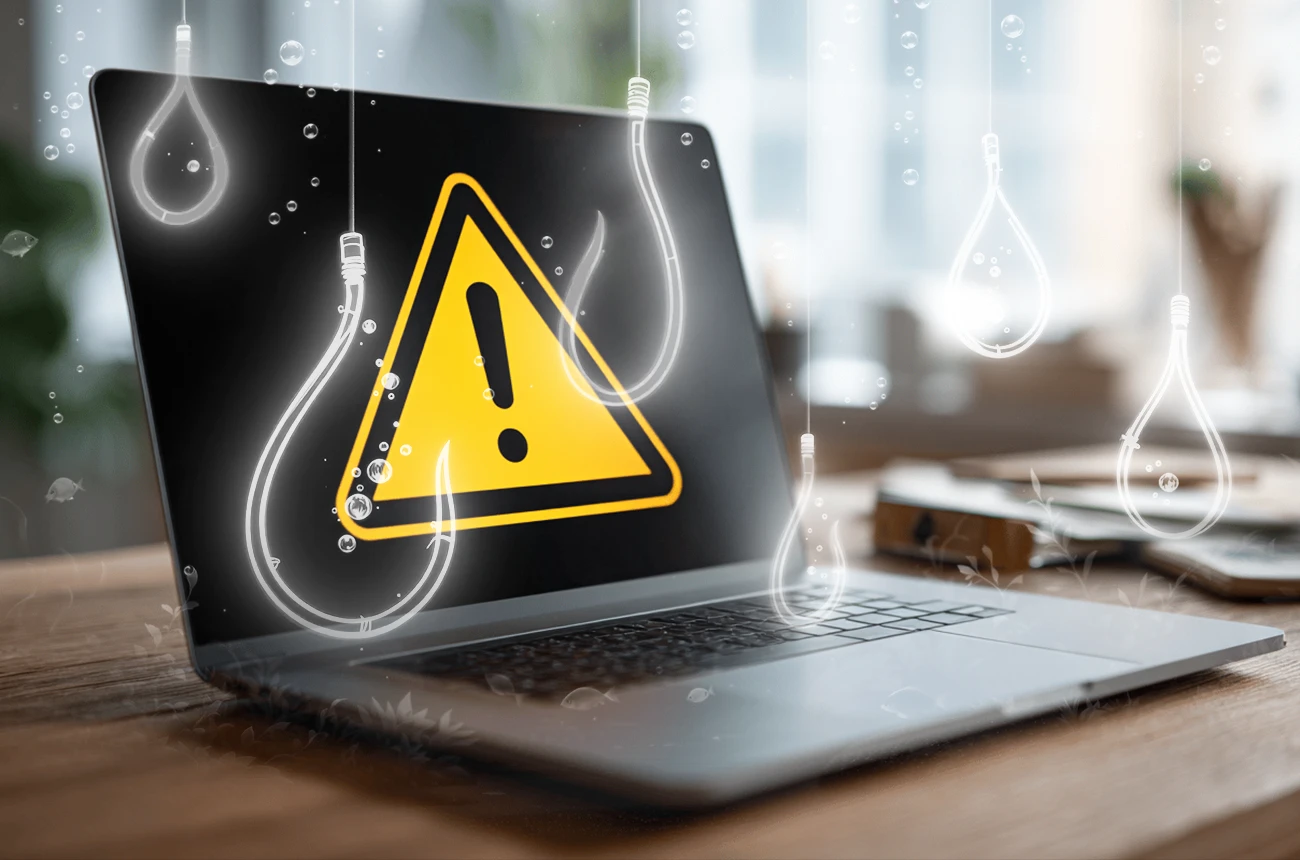Awareness Solutions
Cyber Security Training
E-LearningCustomized E-Learning Development Awareness AcademyCyber Security Learning JourneyWebinarsPhishing Training Service
Company

Email phishing remains the classic form ofcyberattack, but it has evolved considerably. Modern phishing emails aredesigned to look deceptively genuine and use sophisticated manipulationtechniques.
Deceptively genuine design: Fake senderaddresses, minimally altered domains, and professional design significantlyincrease credibility. Attackers copy the corporate design and communicationstyle of well-known companies down to the smallest detail.
Spear phishing and CEO fraud: These targetedattacks use personalized information such as names, positions, and internalstructures. In the financial sector in particular, employees are asked totransfer large sums of money based on supposed instructions from theirsuperiors.
Prompt-Bombing: A particularlyinsidious tactic in which victims are psychologically pressured by repeatedmulti-factor authentication requests until they agree out of frustration.
Smishing attacks exploit the perceived trustworthinessof SMS messages. The directness and brevity of text messages often convey afalse sense of security.
Cybercriminals send links to deceptively genuine loginpages or infiltrate malware. Common scenarios include fake packagenotifications, bank warnings, or supposed security updates. Mobile use makes iteven more difficult to check suspicious links.
Telephone attacks are becoming more sophisticatedthanks to the use of AI-generated voices and deepfake technology. Attackerspose as IT support staff, government officials, or even colleagues from otherdepartments.
Through skillful conversation, authentic backgroundnoises, and pre-researched internal information, they create a sense offamiliarity and urgency. Calls that refer to current events or known systemproblems are particularly effective.
Social media platforms offer attackers an idealtarget. Friend requests from supposed acquaintances, manipulative messages, andfake profiles are used to gather information.
Deepfake videos and sophisticated fake profilessignificantly increase authenticity. Attackers use publicly availableinformation from LinkedIn, Facebook, and other platforms to developpersonalized attacks.
Modern cyberattacks have several commoncharacteristics that significantly increase their effectiveness:
Psychological pressure forms the foundation of successful attacks.Artificial time pressure, threats of consequences, or tempting rewards createurgency and bypass rational decision-making processes.
Comprehensive preliminary research enables highlypersonalized attacks. Information from social media, company websites, andpublic databases is systematically collected and evaluated.
Multi-channel strategies reinforce credibility. Combined attacksvia email, text message, and telephone create a coherent threat scenario thatis more difficult to see through.
Identifying phishing attacks requires a systematicapproach and trained awareness of suspicious signals.
Email and SMS analysis: Carefully check sender addresses and watchout for subtle differences in domains. Spelling mistakes, unusual wording, andgeneric salutations are warning signs. The hover effect over links shows theactual destination before you click.
Verification of telephone inquiries: Politely endsuspicious conversations and call back using known, verified phone numbers. Useofficial contact details and avoid using numbers from the suspicious message.
Social media caution: Be skeptical of unexpected contactrequests and thoroughly check profiles for authenticity. Watch out forincomplete profiles, few contacts, or suspicious activity patterns.
Tactic recognition: Develop sensitivity tomanipulation techniques such as unusual time pressure, unusual requests, orcalls for immediate action.
A sustainable cybersecurity strategy requires morethan technical solutions—it requires a culture of security that is put intopractice. Security awareness must not just be a set of rules, but must become anatural part of everyday working life.
Establishing security as everyday behavior: The most effectivesecurity processes are useless if employees do not internalize rules ofconduct. An authentic security culture makes protective measures a matter ofcourse – not out of fear of consequences, but out of a sense of responsibilitytowards the company and colleagues.
Continuous training and measurement: Targeted phishingtraining, interactive e-learning modules, and regular awareness campaignscreate sustainable security awareness. It is important to continuously measuresuccess and adapt measures to new threat situations.
The integration from artificial intelligence inphishing attacks reached a new dimension in 2025. AI-generated emails,hyper-personalized messages, and deepfake technologies require correspondinglyadvanced defense strategies.
At the same time, AI also offers opportunities fordefense: automatic detection of suspicious communication patterns, adaptivesecurity systems, and intelligent training approaches can strengthen the humanfirewall.
Phishing in 2025 is more multifaceted andpsychologically sophisticated than ever before. However, a critical mindset,technical awareness, and an established security culture form strong defensemechanisms. Every employee can become a “human firewall” and thus strengthenthe entire organization.
The key lies in a combination of continuousawareness-raising, practical training, and a corporate culture that viewssecurity as a shared responsibility. Only like this companies can successfullycounter constantly evolving cyber threats.
Sustainable protection against modern phishing attacksrequires more than one-off training courses. With the TreeSolution SecurityAwareness Academy, we offer comprehensive solutions: interactive e-learningjourneys, targeted awareness campaigns, and realistic phishing simulations.
Our proven three-step methodology—analysis, training,and continuous measurement—promotes an institutionalized security culture andtransforms your employees into effective security ambassadors. Let's worktogether to strengthen your human firewall—in a well-founded, sustainable, andmeasurably successful way.